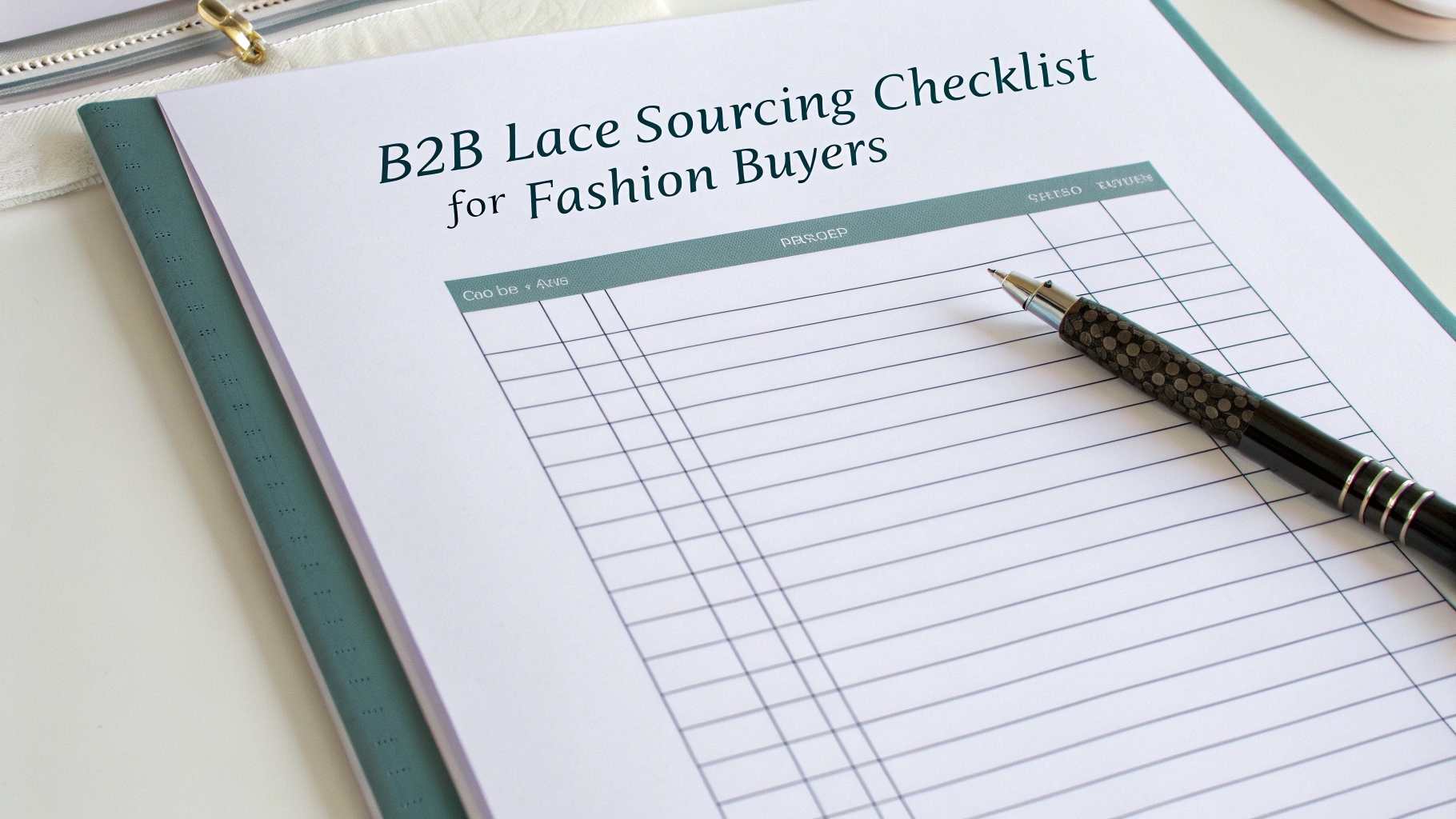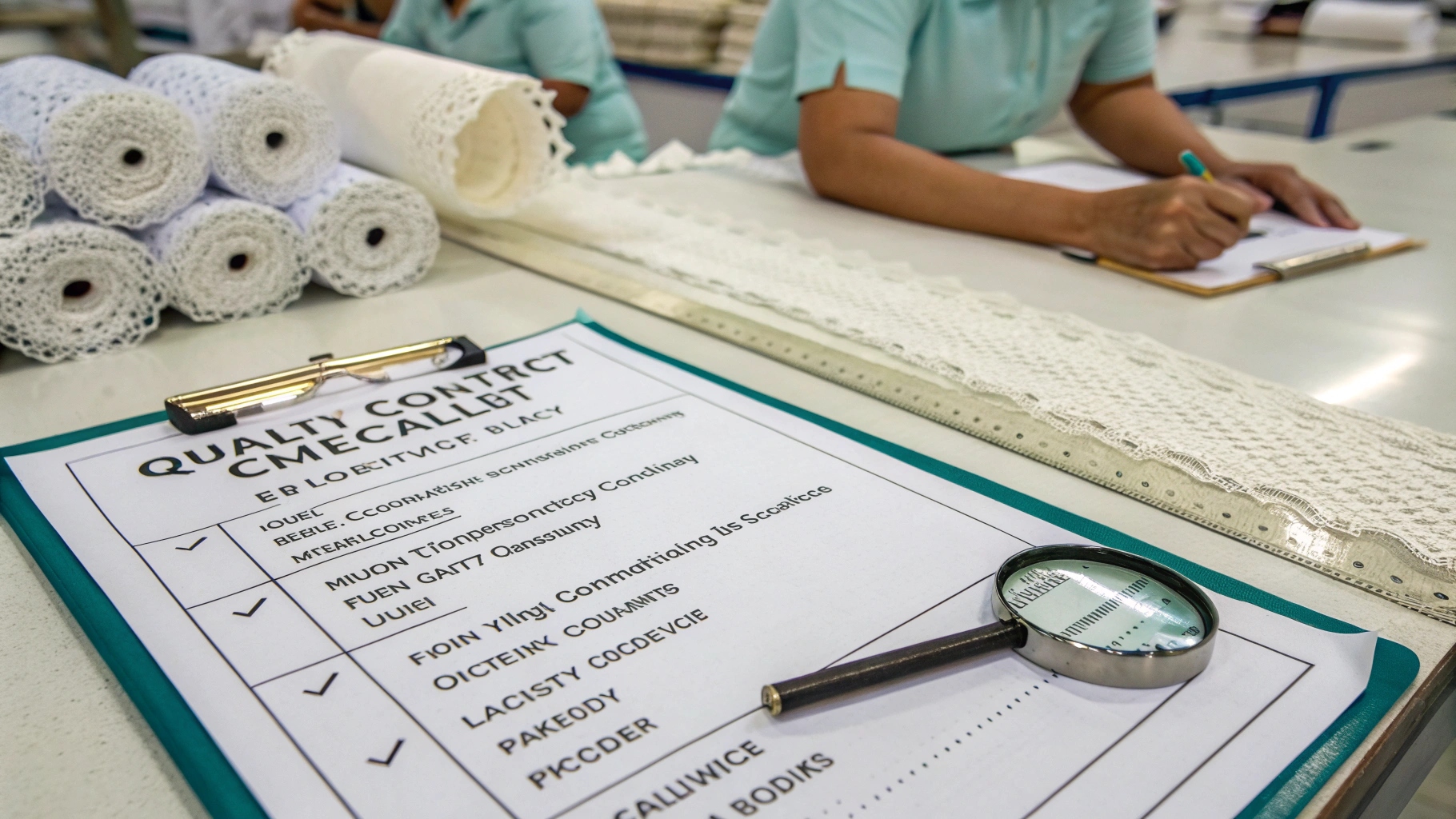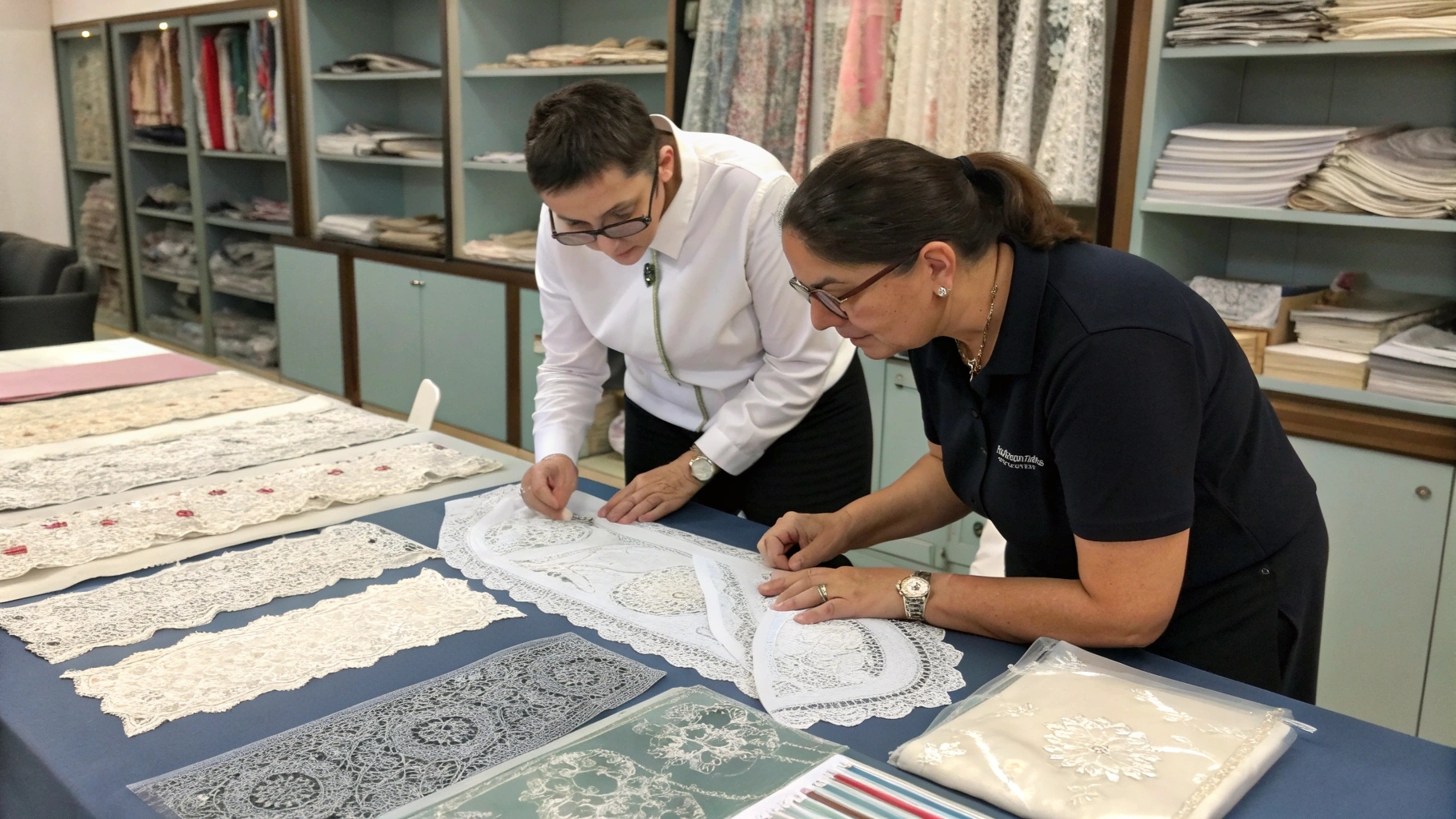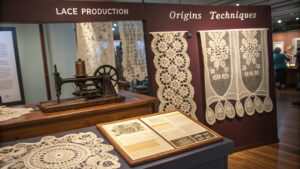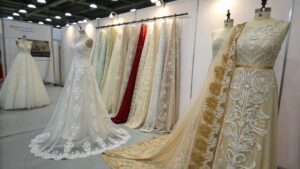Finding reliable suppliers feels impossible. Quality issues drain profits. Lead times destroy schedules. You need a proven system that works.
Successful lace sourcing requires a systematic approach covering supplier verification, quality standards, and relationship management. This comprehensive checklist helps fashion professionals secure premium materials while avoiding common pitfalls that cost time and money.
After working with hundreds of fashion designers over the past decade, I’ve seen the same mistakes repeated countless times. Smart buyers follow proven systems. They save money and get better results.
How Do You Identify Quality Lace Suppliers?
Supplier selection makes or breaks your entire operation. Bad choices create endless headaches. Smart research saves everything.
Quality suppliers demonstrate consistent production capabilities, transparent quality control systems, and strong industry references. Look for established manufacturers with specialized equipment, original design capabilities, and flexible minimum order quantities.
Finding the right lace fabric supplier requires deep investigation. I always start with production capacity assessment1. Real manufacturers own specialized embroidery machines. They show you their facilities. They explain their processes clearly.
Check their design capabilities2 first. Original designs protect your brand. At MarryLace, we maintain over 20,000 copyrighted patterns. This protects our clients from counterfeit issues. Ask potential suppliers about their design team. Request patent certificates. Verify their intellectual property protection.
Production capacity tells the real story. We operate 30+ specialized embroidery machines in Hunan and 9 machines in Turkey. This scale ensures consistent quality and reliable delivery. Small operations cannot handle large orders properly. They subcontract work. Quality suffers.
Quality control systems separate professionals from amateurs. Every legitimate wholesale lace fabric3 manufacturer follows strict protocols. They test raw materials. They inspect every production stage. They provide detailed quality reports. Our design process includes multiple checkpoints. We catch problems before they reach customers.
Financial stability matters more than most buyers realize. Unstable suppliers create supply chain disasters. Check their business registration. Verify their export licenses. Ask for bank references. Strong suppliers invest in equipment upgrades. They attend international trade shows. We’ve participated in Paris exhibitions since 2007.
| Evaluation Criteria | What to Look For | Red Flags |
|---|---|---|
| Production Capacity | 20+ specialized machines | Vague capacity claims |
| Design Portfolio | 1000+ original patterns | Generic catalog designs |
| Quality Control | Multi-stage inspection | No QC documentation |
| Financial Stability | Export license, bank refs | Payment-only focus |
What Should Your MOQ Strategy Look Like?
Minimum order quantities destroy small brands. High MOQs lock up capital. Smart negotiation creates flexibility.
Effective MOQ management balances cost efficiency with cash flow needs. Premium lace suppliers offer flexible minimums for specialized products while maintaining competitive pricing through strategic order planning and long-term partnerships.
MOQ negotiations require careful strategy. Most bulk lace fabric4 suppliers set high minimums. They protect their margins. Smart buyers find creative solutions. We work differently at MarryLace. We understand boutique designers need flexibility.
Start with your actual needs assessment. Calculate your seasonal requirements. Factor in storage costs. Consider cash flow timing. Many designers overorder because suppliers demand high MOQs. This creates inventory problems. Working capital gets tied up unnecessarily.
Build relationships before you need them. Suppliers offer better terms to trusted customers. Place smaller test orders first. Prove your payment reliability. Show growth potential. We reduce MOQs for clients who demonstrate consistent ordering patterns. Long-term relationships benefit everyone.
Consider product mixing strategies. Combine different styles in single orders. This spreads minimum quantities across multiple products. Our [luxury bridal collection](https://www.verawangbride.com/wedding-dresses)5 works well with beaded lace collection orders. Smart mixing reduces individual product minimums.
Seasonal planning helps tremendously. Plan your entire year’s needs. Suppliers offer better terms for consolidated orders. They can plan production schedules. You get priority treatment during busy seasons. Our customers who plan annually get the best pricing and delivery terms.
Payment terms affect MOQ flexibility. Faster payments often reduce minimum requirements. Some suppliers offer MOQ reductions for advance payments. Cash flow planning becomes crucial. Balance payment timing with inventory needs.
How Can You Ensure Consistent Quality Control?
Quality problems destroy customer relationships. Inconsistent batches create production nightmares. Prevention costs less than fixing problems.
Robust quality control requires detailed specifications, sample approval processes, and regular factory audits. Establish clear quality standards, document everything, and maintain ongoing communication with suppliers throughout production cycles.
Quality control starts before production begins. Detailed specifications prevent misunderstandings. Document everything clearly. Include color standards, weight requirements, and construction details. Our quality team creates comprehensive spec sheets for every order. This eliminates confusion later.
Sample approval processes save enormous problems. Never skip this step. Request samples for every new design. Test them thoroughly. Check colorfastness. Verify construction methods. Compare samples against your standards. We maintain sample libraries for every client. This ensures consistency across multiple orders.
Establish clear quality benchmarks. Define acceptable tolerances. Specify testing methods. Document inspection procedures. Share these standards with suppliers. Good embroidered lace wholesale suppliers welcome clear standards. They reduce production risks for everyone.
In-process inspections catch problems early. Don’t wait for finished goods. Check raw materials first. Monitor production stages. Verify color matching during dyeing. Our 3D floral embellishment products require multiple inspection points. Each layer gets checked separately.
Color consistency requires special attention. Dye lot variations destroy production runs. Specify color matching requirements clearly. Request lab dips for approval. Monitor lighting conditions during inspection. We maintain strict dye lot control across both our facilities. This consistency keeps customers happy.
Documentation protects everyone. Photograph approved samples. Record batch numbers. Track production dates. Maintain inspection reports. This paperwork prevents disputes later. It also helps identify patterns when problems occur.
Communication solves most quality issues. Stay in touch during production. Ask for progress updates. Address concerns immediately. Good suppliers appreciate involved customers. They want to deliver perfect orders. Regular communication helps everyone succeed.
Why Does Sample Approval Matter So Much?
Samples prevent expensive mistakes. They verify quality standards. They protect against production disasters.
Sample approval establishes quality benchmarks, verifies color accuracy, and confirms construction methods before bulk production begins. This critical step prevents costly mistakes and ensures final products meet exact specifications.
Sample approval protects your entire investment. Production costs multiply problems. A small sample issue becomes a disaster in bulk production. Smart buyers invest time in thorough sample evaluation. This prevents much larger losses later.
Color accuracy requires special attention during sampling. Monitor lighting conditions carefully. Use standard light boxes when possible. Check colors under different lighting conditions. Our [custom color development](https://www.pantone.com/uk/en/colour-consulting/custom-colour-solutions?srsltid=AfmBOopmdpWR7D0oX-zTR25PV0dLT02urVLVbgruLlkAceTZLT26PNMD)6 process includes multiple lighting tests. Colors must match across all conditions.
Construction details matter enormously. Check stitch density carefully. Verify pattern alignment. Test stretch properties if applicable. Examine edge finishing. Our rhinestone applications7 require precise placement testing. Sample approval catches placement issues before production begins.
Material quality shows clearly in samples. Feel the fabric weight. Check fiber content. Test durability through washing. Verify any special treatments. Good samples predict production quality accurately. Poor samples warn of production problems ahead.
Documentation makes samples valuable long-term. Photograph approved samples from multiple angles. Record approval dates. Note any special requirements. Store physical samples properly. This documentation helps with reorders. It also resolves disputes quickly.
Testing procedures should be standardized. Develop consistent evaluation methods. Use the same lighting conditions. Apply identical testing procedures. Train your team properly. Consistent evaluation produces reliable results. Our quality team follows written protocols for every sample evaluation.
Supplier feedback improves the process. Share detailed approval comments. Explain any concerns clearly. Suggest improvements when possible. Good suppliers appreciate detailed feedback. It helps them improve their processes. Better samples lead to better production runs.
Conclusion
Smart sourcing requires systematic evaluation of suppliers, strategic MOQ planning, rigorous quality control, and thorough sample approval processes for long-term success.
-
This resource will guide you on evaluating production capacity effectively, ensuring you choose a capable supplier. ↩
-
Learn about the key aspects of design capabilities that protect your brand and ensure originality. ↩
-
Explore this link to understand essential criteria for selecting a reliable wholesale lace fabric supplier. ↩
-
Explore this link to find reliable suppliers for bulk lace fabric, ensuring you get the best deals and quality for your designs. ↩
-
Discover the elements that make up a luxury bridal collection, helping you understand trends and quality for your boutique. ↩
-
Explore this link to understand how custom color development ensures color accuracy and consistency in your products. ↩
-
Learn about the testing processes for rhinestone applications to ensure quality and precision in your designs. ↩
